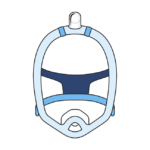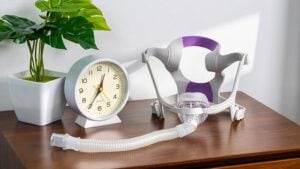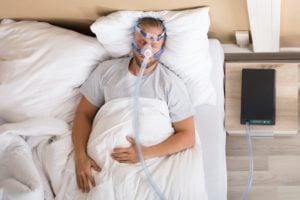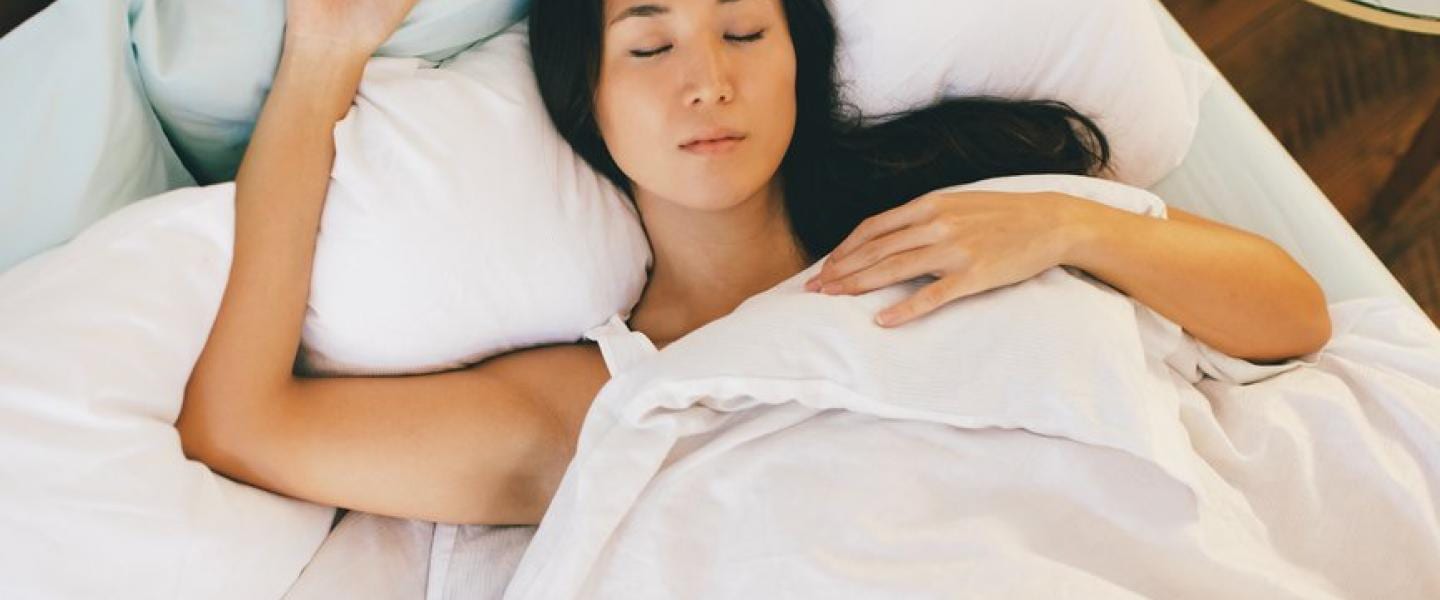When you buy through our links, we may earn a commission. Products or services may be offered by an affiliated entity. Learn more.
How to Choose a CPAP Mask Based On Your Sleep Position
CPAP treatment requires the use of a mask. While some CPAP users must use a specific mask type, others are free to choose a mask based on their preferred sleep position.
It is crucial to follow the advice of your doctor or sleep specialist when choosing a CPAP mask. Selecting the correct mask can be a matter of trial and error, and your doctor can help you try out different options and address any potential concerns. The right mask should offer a comfortable fit while providing effective treatment.
Types of CPAP Masks for Each Sleep Position
The three most common CPAP mask designs are full-face, nasal, and nasal pillow masks. Full-face masks are the bulkiest, as they cover both the nose and the mouth, while nasal masks cover only the nose. Nasal pillow masks are the least obtrusive, as they cover only the nostrils and do not have a hard shell.
Since CPAP masks require a tight seal to avoid air leaks , sleeping in a way that presses on the mask can compromise your treatment’s effectiveness. A CPAP mask’s headgear can also interfere with sleep, particularly if it has hard plastic buckles or stiff anchor straps. When choosing a CPAP mask, you should consider both the overall size and shape of the mask and where the headgear rests against your face. The goal is to find an effective mask that is still comfortable during sleep.
CPAP Masks for Side Sleepers

Sleeping on your side is one of the best positions for treating sleep apnea, since it prevents gravity from impacting your airway the way it does when sleeping on your back . Unfortunately, side sleepers sometimes struggle to find the right CPAP mask.
Nasal pillow masks are generally a suitable option for side sleepers. The low profile of the mask typically rests higher than the pillow itself, and the mask can keep its seal if the sleeper turns their face against the pillow.
Nasal masks, which cover all or part of the nose, are another option for side sleepers to consider. An effective seal and soft, adjustable headgear can help prevent air leaks, but side sleepers may still require a CPAP-friendly pillow to accommodate their mask .
CPAP Masks for Back Sleepers

CPAP users who sleep on their back have their choice of mask styles, since this position accommodates even full-face masks without difficulty. While this may make sleeping on your back the best position if you use a CPAP mask, sleeping this way can make it more likely for your airway to collapse due to gravity.
If your doctor is aware that you sleep on your back and has not encouraged you to change your sleeping position, you will likely be comfortable with any mask that is effective and fits any other needs you may have. The position also makes it difficult to dislodge your mask, though some back sleepers may struggle with single-strap headgear.
CPAP Masks for Stomach Sleepers

Stomach sleeping is the least common sleep position , and people who sleep on their stomach have unique concerns when choosing a CPAP mask. The position causes most masks to press into the face, causing discomfort and frequent air leaks. Depending on the size of your mask, it may also force your head into a position which places stress on the neck and can cause next-day pain or stiffness.
Due to these factors, most people are only able to sleep on their stomach if they use a nasal pillow mask. The low profile of nasal pillows makes them ideal for this, as they are unlikely to become dislodged or cause pain regardless of sleep position. However, even people who use a nasal pillow mask should ensure their actual pillow accommodates the mask. Some masks also have tube positioning along the temples, which can cause air restriction depending on your position and the firmness of your pillow.
Using a CPAP Pillow for Better Mask Fit
Not all CPAP users are able to use the full range of CPAP mask types, and your choice of CPAP mask must follow the advice of your sleep specialist. If the mask you need to use makes it difficult to sleep in your preferred sleep position, a CPAP pillow might offer a solution. These pillows are shaped to accommodate masks better than a traditional pillow, even while sleeping on your side.
Where Can You Purchase CPAP Masks?
CPAP masks, like CPAP machines, require a prescription. Despite this, there are multiple options for where to buy your CPAP mask. Online retailers do still require a prescription, which they usually check by having you upload or fax them the prescription. Once your prescription is confirmed, you will be able to make your purchase.
Online retailers usually have the widest selection of CPAP machines and CPAP masks, but brick-and-mortar medical equipment retailers are also popular options and may be more convenient if you need a mask immediately. Many sleep clinics and specialists also sell a limited range of CPAP masks. Their prices are usually higher, but purchasing through your sleep specialist allows them to better track your treatment.
There are multiple variations of CPAP masks, including different sizes and styles. If your current mask is uncomfortable, it is important to discuss your concerns directly with your sleep specialist or doctor. They can help you try other styles or adjust your current mask.
References
4 Sources
-
A.D.A.M. Medical Encyclopedia. (2022, January 1). Positive airway pressure treatment. MedlinePlus., Retrieved February 9, 2023, from
https://medlineplus.gov/ency/article/001916.htm -
Kryger, M. H. & Malhotra, A. (2022, August 11). Management of obstructive sleep apnea in adults. In N. Collop (Ed.). UpToDate., Retrieved February 9, 2023, from
https://www.uptodate.com/contents/management-of-obstructive-sleep-apnea-in-adult -
Schotland H. (2021). PAP therapy: Quick tips for troubleshooting to address problems with use. American Journal of Respiratory and Critical Care Medicine, 204(6), P11–P12.
https://pubmed.ncbi.nlm.nih.gov/34543160/ -
Skarpsno, E. S., Mork, P. J., Nilsen, T., & Holtermann, A. (2017). Sleep positions and nocturnal body movements based on free-living accelerometer recordings: Association with demographics, lifestyle, and insomnia symptoms. Nature and Science of Sleep, 9, 267–275.
https://pubmed.ncbi.nlm.nih.gov/29138608/
















